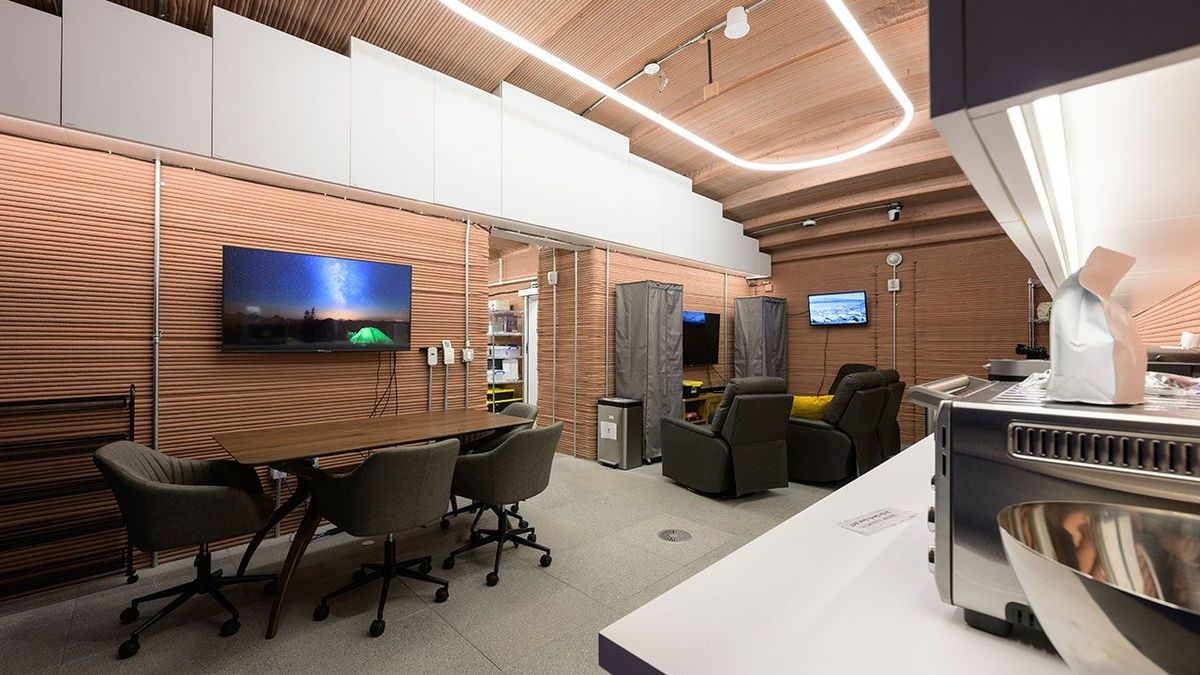CHAPEA project of NASA
Context
- Recently, four volunteer crew members of NASA’s Mars simulation mission emerged after a year of living in a habitat replicating the Red Planet.
- A part of NASA’s Crew Health and Performance Exploration Analog (CHAPEA) project, it was the first of three planned simulations to understand the challenges Mars poses for space explorers.
How was the Mars simulation created?
- A 3D printed airlocked habitat of 1,700 sq feet was created and set up at the Johnson Space Center in Houston, Texas, dubbed “Mars Dune Alpha”.
- It included four bedrooms, two bathrooms, a work area, a robot station, a gym, common sandy areas with various instruments, and a vertical farm.

Credit: Space.com - Simulated Martian soil and a backdrop of red, rocky cliffs were provided for an immersive experience.
- The additional 1,200 sq ft space, adjoining the Mars Dune, Alpha was used for extravehicular activities typically done by astronauts outside their spacecraft.
- The CHAPEA project a crucial step in America’s space exploration, particularly of Mars. NASA aimed to collect data for insight into “the potential impacts of long-duration missions to Mars on crew health and performance” and “understand and counter the physical and mental challenges astronauts will face”.
- The data will also help the agency prepare for long-term presence on the Moon as part of its Artemis programme, seen as another step towards an expedition to Mars.
What is the habitat like on Mars?
- The temperature on Mars ranges between 20 degrees Celsius and -153 degrees Celsius.
- The planet has a rocky surface with canyons, volcanoes, dry lake beds, and craters, all covered in red dust.
- Winds can create dust storms, with tiny ones resembling tornadoes and large ones occasionally enveloping the entire planet.
- They are visible from Earth using telescopes.
- It has about one-third the gravity of Earth and the atmosphere is much thinner than Earth’s, containing more than 95% carbon dioxide and less than 1% oxygen.
- The planet turns on its axis more slowly than Earth, and being farther from the Sun, takes longer to revolve around the Sun.
- A day on Mars is 24.6 hours and a year is 687 Earth days long.
What are the other challenges involved in a mission to Mars?
- The biggest challenge is the long duration of a Mars mission because even a one-way trip would take six to nine months.
- Other challenges include logistics for life support, and maintaining supplies and crew health.
- Mars’s thin atmosphere also makes it difficult to slow down a spacecraft for a safe and precise landing.
- Given the distance, communications from and to Earth could have as much as a 20-minute lag, which would be too long in case of real-time help during emergencies.
Source: IE
Visit Abhiyan PEDIA (One of the Most Followed / Recommended) for UPSC Revisions: Click Here
IAS Abhiyan is now on Telegram: Click on the Below link to Join our Channels to stay Updated
IAS Abhiyan Official: Click Here to Join
For UPSC Mains Value Edition (Facts, Quotes, Best Practices, Case Studies): Click Here to Join
